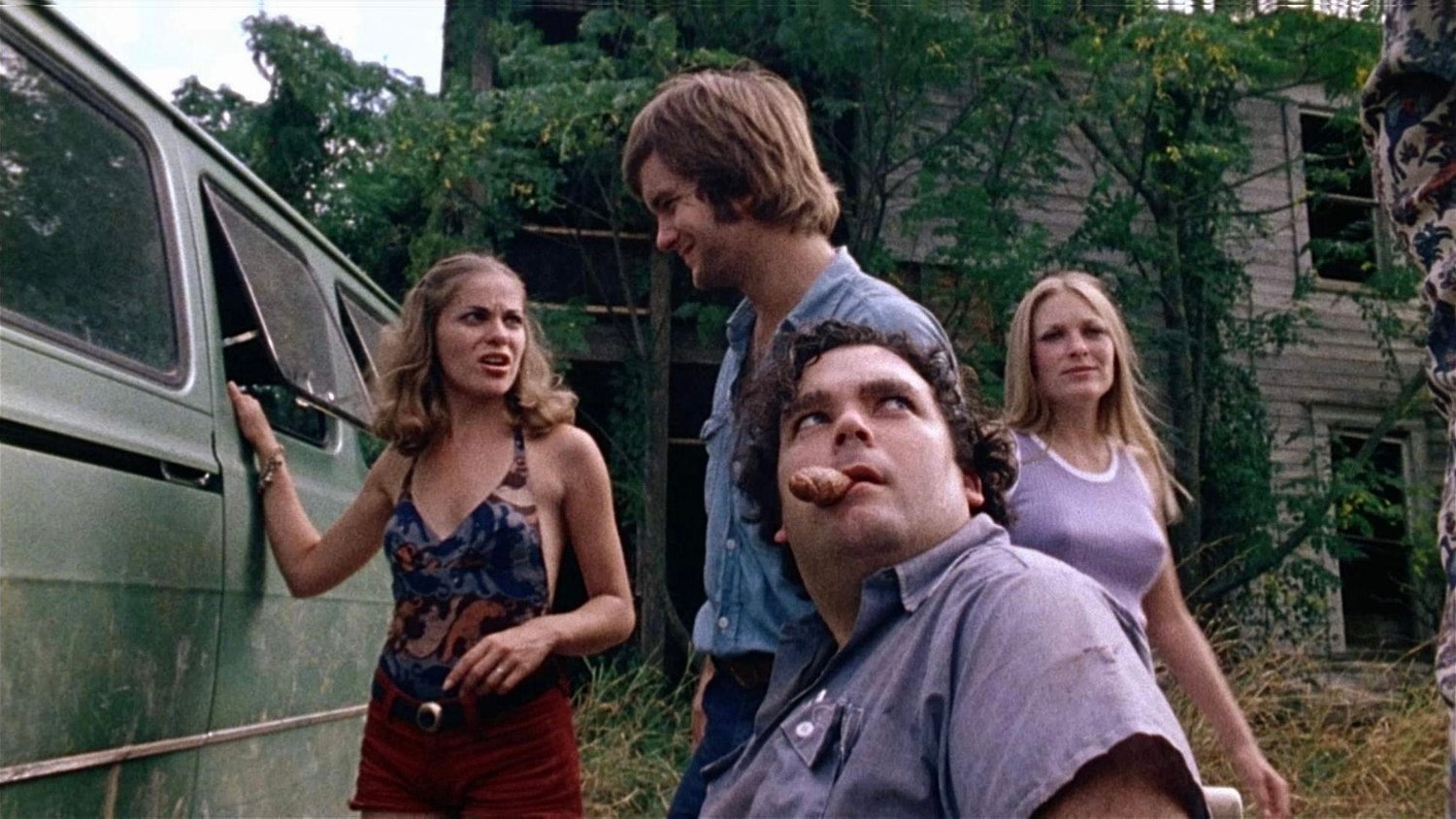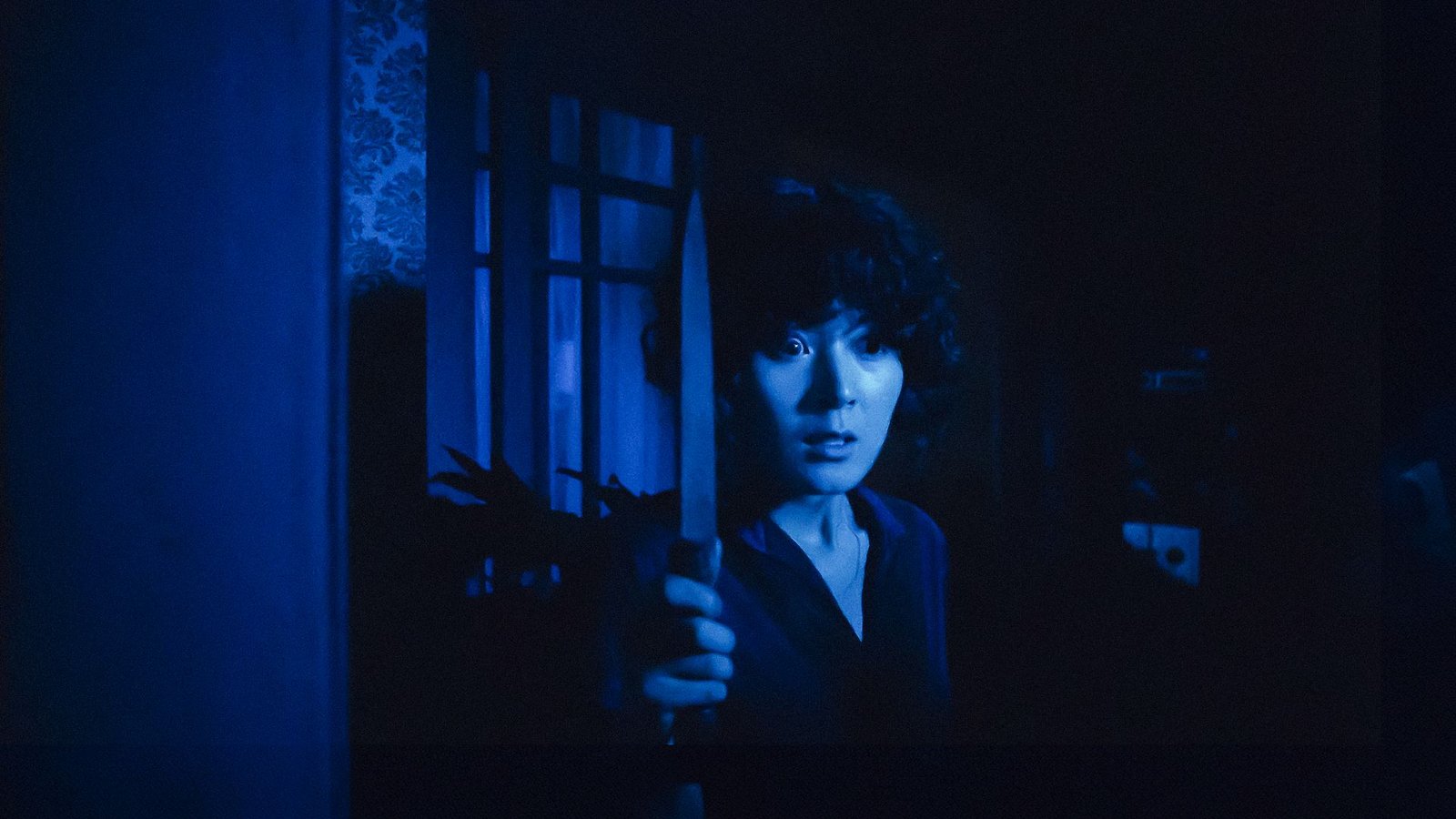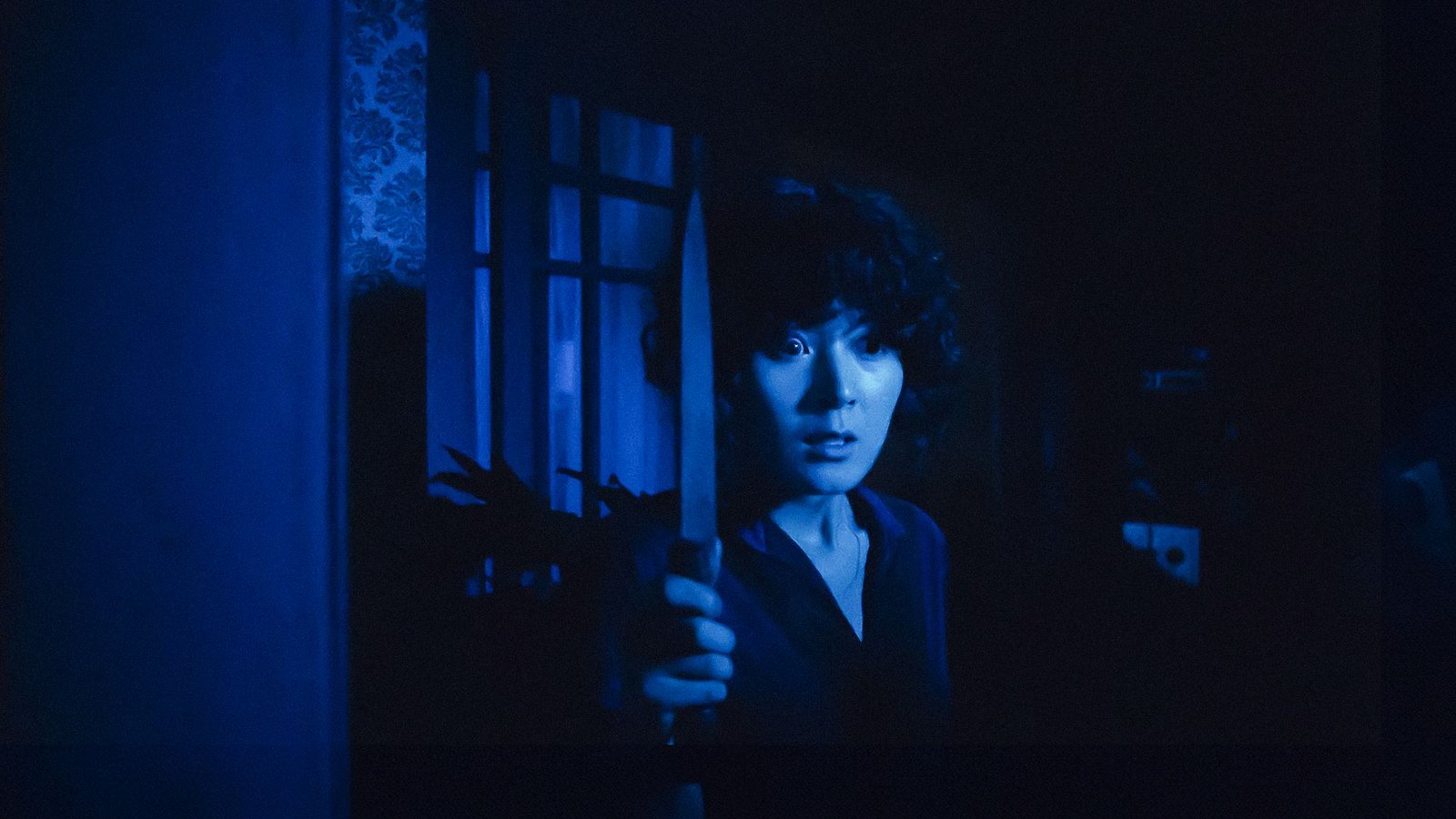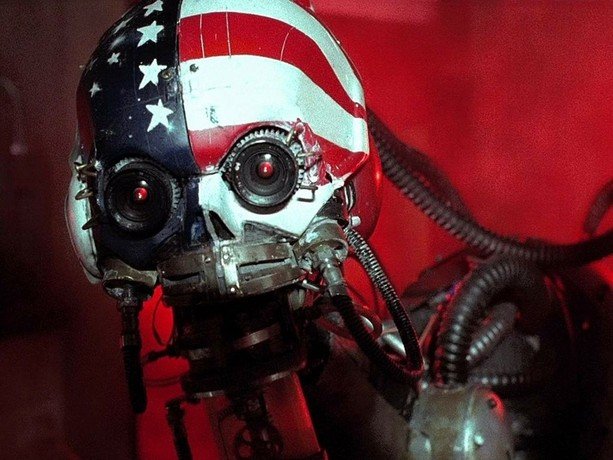Ja naprawdę myślałem, że ten film został zrobiony przez szaleńców – Wes Craven
Autor: Bartłomiej Krawczyk
W październiku 2024 r. minęło 50 lat od amerykańskiej, a potem światowej premiery jednego z najsłynniejszych horrorów w historii kinematografii. „The Texas Chainsaw Massacre” jest jednym z najczęściej analizowanych i reinterpretowanych horrorów wszechczasów. Recenzenci oraz teoretycy kina mają w przypadku jedynego arcydzieła Tobe Hoopera szerokie pole do popisu. Należy pamiętać, iż film ten nakręcono w czasach, gdy wciąż możliwa była metoda realizacji guerilla. Pożyczało się, czasami nawet kradło kamerę, zbierało grupkę przyjaciół chętnych do współpracy, zdobywało taśmę 16 mm, po czym przy odrobinie szczęścia i zdecydowania projekt ruszał pełną parą.
To były czasy, w których możliwe było ponowne zdefiniowanie suspensu i terroru poprzez wejście na jeszcze nie zbadane terytorium grozy. To były czasy niepokojów społecznych w USA związanych z wojną w Wietnamie, masakrą sportowców w Monachium i aferą Watergate. Czasy porwań samolotów, rządowej opresji, konfliktów na tle rasowym, rewolucyjnych zrywów i terrorystycznego rozlewu krwi. „Teksańska masakra…” znakomicie odzwierciedla tenże posępny okres, obrazując pięcioro młodych ludzi zmierzających w kierunku rodzinnego gniazda i natrafiających na swej drodze na irracjonalne zło w literalnym przedsionku piekła.

Hooper twierdzi, iż idea nakręcenia „Teksańskiej…” zrodziła mu się w głowie w trakcie świątecznych zakupów. Zebrany w sklepie nachalny tłum konsumentów popchnął przyszłego reżysera w kierunku stoiska z piłami mechanicznymi. Wtedy Tobe wyobraził sobie, jak chwyta jedną z pił i za jej pomocą anihiluje skupisko ludzkie. Tak miała początek jedna z najgłośniejszych prób przekroczenia granic, tego, co akceptowalne w historii kina.
Owszem, dwa lata wcześniej młodziutki Wes Craven zrealizował skandalizujący „The Last House on the Left” (1972), w którym także dotknął tematyki brutalności i pierwotnych zwierzęcych instynktów człowieka, ale debiut Cravena nie ma nawet w połowie tak bestialskiej siły rażenia jak „Teksańska…”.
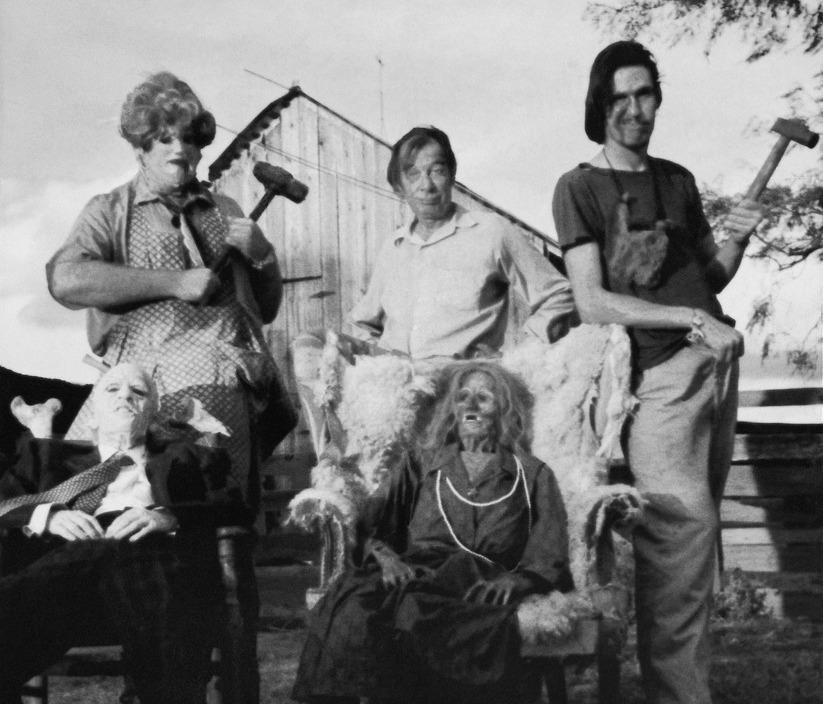
Horror Hoopera należy zaliczyć do survivalu wespół z „Deliverance” Johna Boormana i „Straw Dogs” Sama Peckinpaha. Nurt survival horroru oscyluje tematycznie wokół grupy zwykłych osób, która zostaje zmuszona do przedsięwzięcia obrony przed nagłym i brutalnym atakiem bez celu bądź powodu; wtedy rozpoczyna się bezlitosna walka o przetrwanie. Istnieje wyrazista granica dzieląca cywilizację wywodzącą się z miast oraz ludzi z leśnych ostępów czy samotnych wiejskich farm, którzy często są owocami kazirodczych związków, mają wygląd i cechy bestii oraz żywią nienawiść wobec wścibskich mieszczuchów.
Owe wątki przewijają się w wielu znamienitych horrorach i thrillerach, m.in we wspomnianym „Ostatnim domu po lewej”, „Death Weekend”, „Rituals”, „Fight for Your Life”, „The Hills Have Eyes’77”, „I Spit on Your Grave”, „Southern Comfort”, „Bridge to Nowhere”, „Wrong Turn”, „Calvaire” i „Severance” – by wymienić ledwie kilka.

Sally Hardesty (Marilyn Burns), jej niepełnosprawny brat Franklin (Paul A. Partain), jej chłopak Jerry i kolejna para (Kirk i Pam) podróżują vanem przez Teksas w celu dotarcia do rodzinnego domu rodzeństwa. Po drodze, w okolicach starej opuszczonej ubojni, biorą dziwacznego autostopowicza (psychotyczny Edwin Neal), którego Franklin określa mianem Draculi.
Chłopak najpierw zabawia towarzystwo opowieściami o zabijaniu krów młotem i pistoletem pneumatycznym, potem chwyta za scyzoryk Franklina i głęboko tnie swą dłoń. Gdy grupka odmawia zapłaty dwóch dolców za zdjęcie inwalidy, bezimienny autostopowicz wpada w szał, atakuje brata Sally, a następnie zostaje wyrzucony z vana, na którym rysuje własną krwią coś na kształt symbolu runicznego. Na rezerwach paliwa młodzież dociera do domu Hardestych – skupiska pajęczyn i wyblakłych wspomnień.

Kirk i Pam odłączają się od pozostałych w celu zażycia kąpieli w pobliskim zbiorniku wodnym. Zbiornik jest suchy, ale Kirk słyszy dochodzący z oddali szum generatora. Tam, gdzie jest generator, musi być paliwo, co powoduje, iż parka udaje się w kierunku niszczejącej, spalonej słońcem i na pierwszy rzut oka opuszczonej farmy. Generator chodzi bez zarzutu, na posesji znajdują się stare i nowe auta zakamuflowane siatką, wejście do farmy jest przyozdobione zwierzęcymi skórami, a w środku oboje odnajdują…
… piekło.
Przeszywający do szpiku kości warkot piły mechanicznej. Utkana nieśpiesznie atmosfera dławiącej gardło, niepojętej grozy. Absolutne szaleństwo i terror.
Części zwłok rozświetlane przez błyski kamery. Otwierający film widok rozkopanego grobu i makabrycznej ekspozycji dwóch nadżartych rozkładem ciał, od których emanuje fetor gnicia. Martwy, uderzony przez samochód pancernik leżący w poprzek drogi. Sznur krów śliniących się pod wpływem upału i czekających posłusznie w kolejce do uboju. Złowróżbne ujęcie namiotu w strzępach. Pozbawione liści gałęzie nieopodal farmy przyozdobione girlandami z misek, naczyń do kawy, a także pojedynczym zegarkiem z gwoździem wbitym w tarczę. Gorejąca kula na dziennym nieboskłonie będąca niemym świadkiem przerażających wydarzeń.

Tytuł horroru Hoopera zdaje się obiecywać morze makabry, ale jest złudny. Widz w trakcie projekcji „Teksańskiej…” zostaje zmuszony do wyobrażenia sobie najgorszego, bo szokujące mordy nie są pokazywane drobiazgowo. Jedyna scena gore w filmie to w zasadzie ta, gdy nieuważny Leatherface rozcina sobie nogę piłą mechaniczną i krwawi. Dodatkowo Hooper zrywa z konwencjonalnymi technikami kreowania grozy – nie bawi się w ślimacze budowanie suspensu, groza nadchodzi niespodziewanie, atakuje gwałtownie, np. gdy za plecami Kirka w stalowych drzwiach domowej rzeźni pojawia się ni stad, ni zowąd Skórzana Twarz i uderza chłopaka młotem, a nieszczęśnik zaczyna konwulsyjnie wierzgać nogami. Nasadzenie jego dziewczyny na zwisający z sufitu hak do mięsa to kolejna niezapomniana scena totalnego terroru, która przyprawia o dreszcze i koszmary senne kolejne pokolenia fanów kina grozy.

W odróżnieniu od setek slasherów postaci w „Teksaskiej…” to ludzie z krwi i kości. Nie umierają od razu, padając na ziemię niczym groteskowe manekiny. Walczą zaciekle, usiłują za wszelką cenę przeżyć. I tutaj dochodzimy do sedna, czyli do Sally Hardesty. Marilyn Burns – autentyczna królowa krzyku. Doprowadzona w filmie do granic histerii; z jej umorusanej krwią i brudem twarzy wyziera pierwotny strach oraz desperacja. Niesamowita aktorka – w późniejszym rural horrorze Hoopera „Eaten Alive” (1976), inspirowanym serią morderstw Joe Balla, również pokazała, na jak wiele ją stać. Kiedy z uporem goni ją po zaroślach Leatherface, gdy jest niezdarnie uderzana młotkiem przez dziadka, kiedy wyskakuje przez okno i biegnie jak oszalała ku ocaleniu – w ciągu tych blisko 30 minut niewyobrażalnej udręki jej stan psychiczny się rozpada.
Ed Gein. Seryjny morderca i nekrofil z Wisconsin. Na jego historii luźno oparto „Teksaską masakrę…”. Meble z ludzkich kości, zasłana pierzem i piszczelami podłoga, kurczak w klatce, dekoracje z czaszek, maska z ludzkiej skóry noszona przez Leatherface’a – to wszystko kojarzy mi się jednoznacznie z Geinem. Wspomnieć wypada, iż za odpychający wygląd farmy kanibalistycznej familii odpowiada Robert A. Burns, reżyser psiego horroru „Mongrel” (1982) i odtwórca postaci seryjnego mordercy w średnio udanym „Confessions of a Serial Killer” (1985) Marka Blaira.
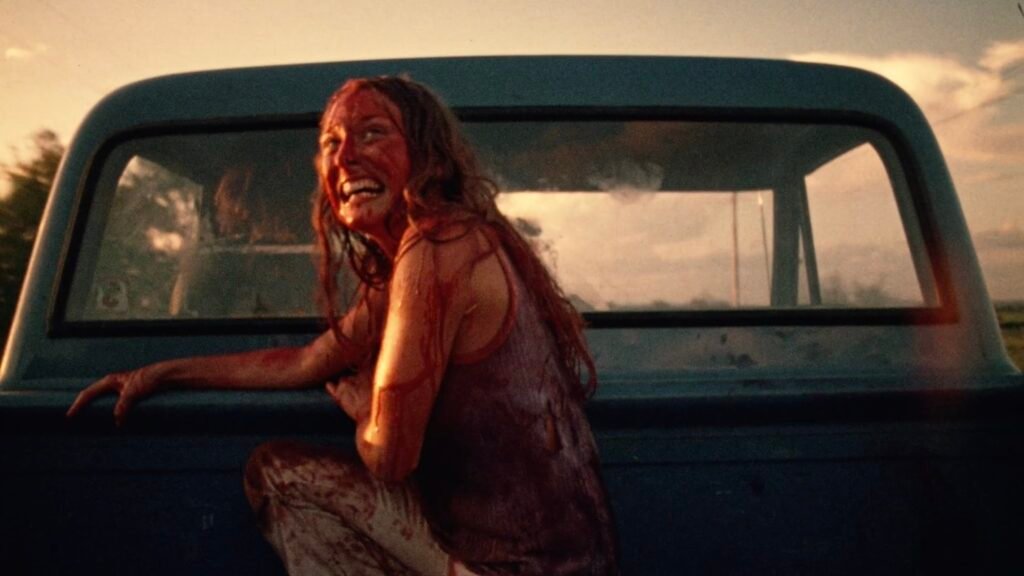
Słówko o soundtracku autorstwa Tobe Hoopera i Wayne’a Bella: stanowi on industrialno-ambientową kakofonię metalicznych brzdęków, skrobań i wrzasków, imitującą atmosferę lokalnej rzeźni tudzież obrazującą stan umysłowy członków rodziny kanibali. I jest po prostu niesamowity!
Uwielbiam ten niezwykle sugestywny horror. Kocham jego niewiarygodnie mroczny, kipiący od sadyzmu i szaleństwa nastrój, nieznośnie makabryczne lokalizacje i ów zatęchły pomarańczowy żar, który prawie powoduje, iż wyczuwam intensywny zapach martwego ludzkiego mięsa. „Teksańska…” nie obiecuje mocnych wrażeń, ona je zapewnia w nadmiarze. To bezkompromisowy atak na ludzkie zmysły, brudny i nienawistny!
Leatherface tańczący niczym dziecko w blasku poranka z warczącą piłą nad głową. Wściekły. Niezaspokojony. Ikona. Cóż za przepiękna scena!

„Teksańska masakra piłą mechaniczną” („The Texas Chainsaw Massacre”, 1974, USA)
reżyseria: Tobe Hooper
scenariusz: Tobe Hooper, Kim Henkel
obsada: Marilyn Burns, Paul A. Partain, Edwin Neal, Jim Siedow, Gunnar Hansen, Allen Danziger
czas: 84 minuty.
